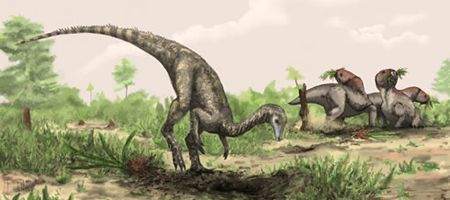Fossils discovered in the 1930s and kept in storage at London’s Natural History Museum appear to belong to the earliest dinosaur ever found.

Named Nyasasaurus parringtoni, the creature was the size of a Labrador dog with a tail more than a meter long. It lived about 245 million years ago – a good 10 to 15 million years before any previously known dinosaur or dinosaur-like creature.
The discovery pushes back the origin of the dinosaurs to much earlier than previously thought, in the Middle rather than Late Triassic.
The fossils were unearthed in the 1930s from the Manda Beds near Lake Nyasa – now Lake Malawi – in Tanzania, by Cambridge University’s Rex Parrington. While they were studied by former curator Alan Charig in the 1950s, he passed away before finishing his work, and it was never published.
But a new examination of the arm bone and pieces of bone from the back and hips has shown all the hallmarks of a dinosaur.
“Although the material is limited, it is very distinctive and completely unlike that of other contemporary reptiles,” says museum dinosaur expert Dr Paul Barrett.
“In particular, a prominent crest, found on the upper arm bone, is a feature found only in Nyasasaurus and other dinosaurs. This crest would have supported large muscles, associated with strong grasping forelimbs.”
The microscopic structure of the bone tissue also shows a woven texture and large spaces for blood vessels, which indicates that the animal grew quickly, as dinosaurs do.
The team also studied a second fossil from Iziko South African Museum in Cape Town: several bones from the neck of another Nyasasaurus individual that also shows many dinosaur-like features.
The team’s analysis suggests that is it is most likely a very early dinosaur, though it’s not clear whether it belongs to any particular subgroup, such as the meat-eating theropods or plant-eating sauropodomorphs.
It’s possible that, instead of being a true dinosaur, Nyasasaurus might have been a very close relative, lying just outside the dinosaur group.
“Although we only know Nyasasaurus from fossil fragments, the anatomy of its upper arm bone and hip vertebrae have features that are unique to dinosaurs, making us confident that we’re dealing with an animal very close to dinosaur origin,” says Barrett.






